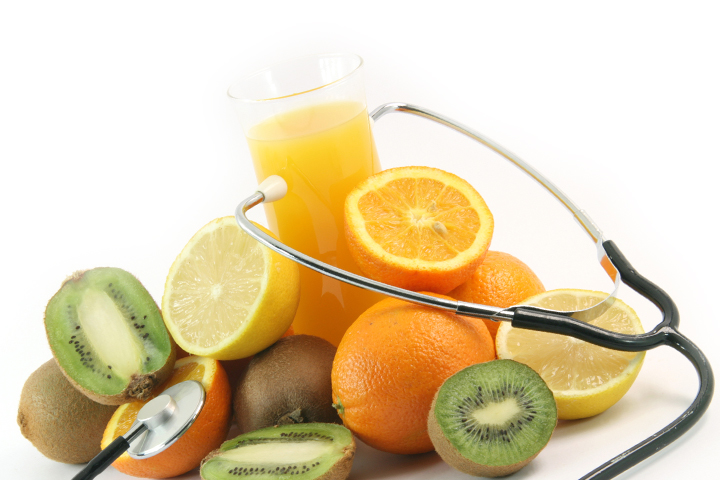
Key Term: Phytochemical
Naturally occurring component in plants that appears to have beneficial effects upon human health (beyond nutritional demands) (Levetin & McMahon, 1996).
Many plants contain incredible phytochemicals which have been proven to help provide protection against cancer, hypertension, heart disease, arthritis and various other conditions and diseases associated with aging (Levetin & McMahon, 1996). This is part of the reason why the high consumption of Fruits and Veggies as well as Whole Grains is so greatly encouraged. According to the Canada Food Guide, adults should eat 7-10 and 6-8 servings of Fruits/Vegetables and Whole Grains, respectively.
Below you will find a list of some foods you may want to incorporate into your healthy daily diet:
|
Food |
Phytochemical |
Action |
| Soy milk, tofu | Genistein | Inhibits the formation of blood vessels that assist in the growth of small tumours |
| Spinach, collard greens | Lutein | Reduces blindness in the elderly |
| Carrots, squash, apricots, peaches | Beta carotene | Protects the immune system |
| Fish oil | Omega-3-fatty acids | May reduce risk of heart disease |
| Chile peppers | Capsicum | Prevents toxic molecules from invading and damaging cells, thereby discouraging the growth of cancerous cells |
| Rosemary | Quinines | Interfere with the action of cancer-causing substances |
| Beans, peas, peanuts | Isoflavones | Interfere with harmful estrogen action and may reduce risk of breast and ovarian cancer |
| Cabbage, broccoli, cauliflower, kale | Isothyocynates, indoles | Block carcinogens from damaging a cell; interfere with the action of harmful precancerous form of estrogen |
| Citrus fruits | Terpenes | Stimulate enzymes that block tumour growth |
| Strawberries, pineapple | Chlorogenic acid | Blocks the production of cancer-causing nitrosamines |
| Garlic, onions | Allylic sulphide | Intercepts and detoxifies carcinogens, slowing tumour growth |
| Flaxseed | Lignans | Interfere with estrogen action and may reduce risk of breast and ovarian cancer |
| All fruits and veggies | Flavenoids | Prevent carcinogenic hormones from attaching to cells |
| Source: Clark, Nancy. Sports Nutrition Guidebook (2nd Ed.). Brookline, MA: Human Kinetics, 1997. Table 2.6 | ||
Follow this link to get a PDF copy of the Canada Food Guide:
Also, check out Health Canada’s Food and Nutrition Website:
http://www.hc-sc.gc.ca/fn-an/index_e.html
Clark, Nancy. Sports Nutrition Guidebook (2nd Ed.). Brookline, MA: Human Kinetics, 1997.
Levetin, E. & McMahon, K. Plants in Society. Toronto, ON: McGraw-Hill Ryerson, 1996.



